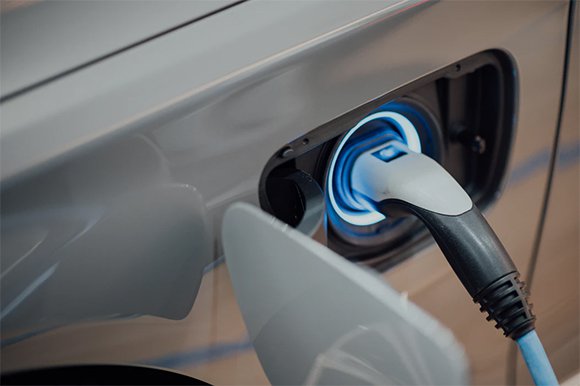Power Plan Work Includes Analysis of Reducing Carbon From Cars and Trucks
- May 10, 2021
- John Harrison

In order to understand what a low-carbon future looks like in the Northwest — as envisioned by some state policymakers — the Council’s work on the 2021 Power Plan is incorporating a “Paths to Decarbonization” scenario analysis. This is an evaluation of various strategies and methods that reduce regional greenhouse gas emissions from the entire economy, with a primary focus on emission reductions related to energy use from the residential, commercial, industrial, transportation, and power sectors.
Steven Simmons, principal energy analyst in the Council’s Power Planning Division, reported on his analysis of transportation at the May meeting of the Council’s Power Committee. The analysis looked at reducing emissions from vehicles — passenger cars and trucks. This would be accomplished by increasing the number of vehicles powered by something other than gasoline and diesel.
In this, the Council is responding to state policies. Washington, for example, has established a goal of having only electric vehicles for sale in the state by 2030. While other Northwest states have not established similar goals, yet, the possibility that they may prompted the analysis. The focus is the potential impacts to the regional electricity system, and the analysis was not confined to just passenger vehicles, but also included trucks, both heavy-duty and light-duty.
“We wanted to know how much electric load would be added to the power system if other states followed Washington’s lead, and we added trucks because they are really key to lowering regional transportation-related emissions,” Simmons said.
The analysis is, in essence, a “what-if” forecast for transportation — what if there is an aggressive move to electrify transportation, both directly with plug-in, battery-powered passenger vehicles and indirectly through conversion of freight trucking to hydrogen-based fuel cell technologies? Batteries make more sense for passenger vehicles than for heavy trucks, largely because of the weight of the batteries themselves. Plug-in battery electric vehicles are very efficient, create no emissions, and can be charged at home. However, battery electric technology may not be the answer for heavy duty trucks. The additional weight of the batteries required to electrify a large freight truck may reduce the truck’s payload, making it less economic. Hydrogen fuel cells may offer an alternative path to clean transportation for freight trucking, while battery electric could make sense for light-duty trucks like delivery vans, Simmons said.
The analysis suggests that by the year 2040, increased electrification of transportation will add nearly 2,800 average megawatts of electricity load to the region while lowering tailpipe emissions by more than 18 percent, he said. Repowering some large freight trucks from diesel to hydrogen fuel cells results in an additional 10-percent emission decline, according to the analysis. An advantage to hydrogen is that vehicles could be fueled at filling stations that would be a lot like current filling stations, and a fill-up likely would take about the same amount of time, as opposed to the hours it typically takes to recharge a battery-powered vehicle with a home charger. Hydrogen fuel cell equipment also is lighter and more compact than batteries.
There are some issues with hydrogen at the moment, though. Hydrogen production for vehicles is power-intensive, limited, and expensive. Also, there currently are no hydrogen filling stations in the Northwest. But there could be in the future.
Another plus for hydrogen, at least in the future, is that if the predicted addition of massive amounts of solar power to the western electricity grid occurs, and as predicted there is so much solar power that excess could be available during daylight hours, that excess electricity might be available to make hydrogen, thus lowering its cost of production. The Douglas County Public Utility District in central Washington, which owns Wells Dam on the Columbia River, already is looking into using excess capacity from the dam to make commercial amounts of hydrogen. Hydrogen as a vehicle fuel also is being pursued in Europe, Canada, and California, and by multiple vehicle manufacturers like Toyota, Honda, and Daimler Truck, Simmons said.



